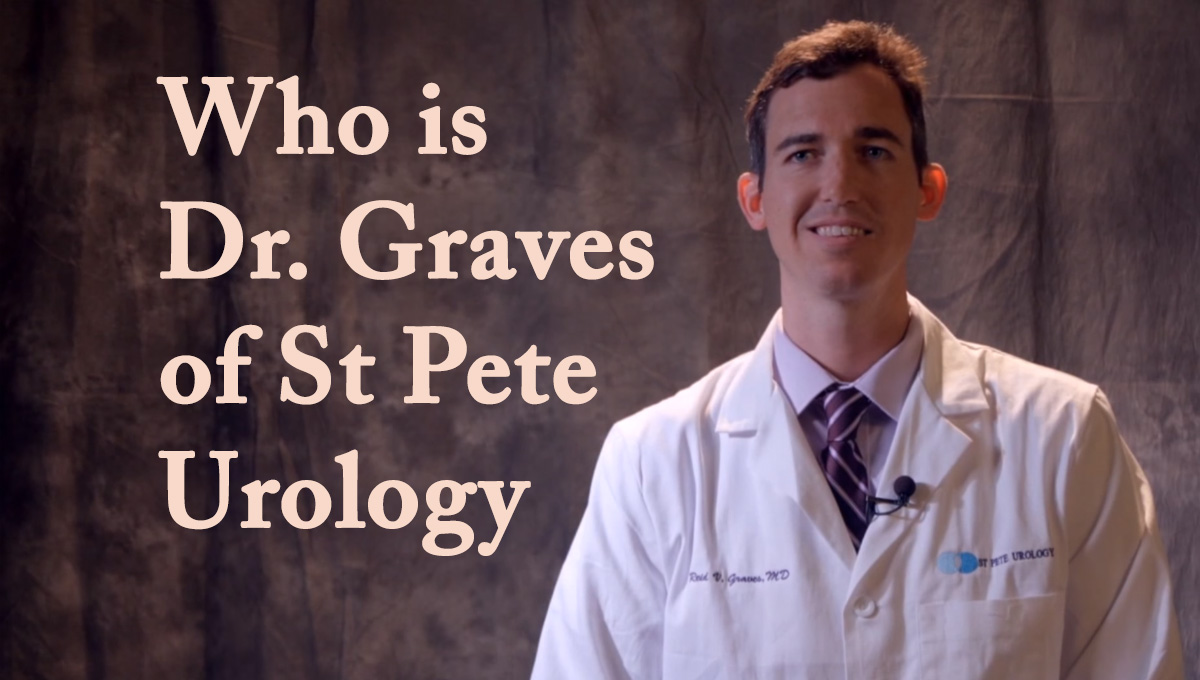Testosterone is a hormone that is produced in the testicles in men. It is mainly responsible for maintaining male characteristics (such as hair growth and a deep voice) and facilitating muscle growth. [Read Full Article…]
Testosterone Replacement Therapy for Low Testosterone in Men
Testosterone is a hormone found in both men and women, but is produced in larger quantities by men. This hormone is produced in the testicles in men and is responsible for various body functions including; red blood cell production, reproduction, sexual drive, muscle mass, and bone density. [Read Full Article…]
Who is Dr Reid Graves of St Pete Urology
Reid Vaughn Graves, MD is a Urologist practicing in the Saint Petersburg area. He completed his General Surgery training and Urology residency at the University of Pennsylvania followed by a fellowship in Robotics and Laparoscopy in Melbourne, Australia. [Read Full Article…]
Erectile Dysfunction – Dr Reid Graves
Shorecrest Graduate Returns

Dr. Reid Graves of St. Petersburg recently came back to St. Petersburg to join St Pete Urology. Graves was the valedictorian for Shorecrest Preparatory School in 2000. After graduating from Shorecrest, he attended Georgetown University, then medical school at the University of Miami. Graves completed his residency at the University of Pennsylvania followed by a robotics fellowship in Melbourne, Australia. [Read Full Article…]
When Do You Need A Vasectomy?
Many men choose a vasectomy as a permanent form of contraception. Vasectomy is a safe method of contraception. This reference summary will help explain the vasectomy procedure. [Read Full Article…]
What is Urethritis?
Urethritis is a disease characterized by the swelling or inflammation of the urethra, the tube through which urine travels from the urinary bladder to outside of the body. People with this condition experience acute pain while urinating. One of the most common causes of urethritis is a bacterial infection caused by E.coli, Gonococcus (it also causes gonorrhea) and Chlamydia trachomatis (responsible for chlamydia). The viruses HSV-1 and HSV-2 may also be responsible. [Read Full Article…]
Join Again St Pete Urology 2nd Free Men’s Health Seminar
You are Invited to join again St Pete Urology 2nd Men’s Health Seminar on June 11, 2014 at St Petersburg, FL, presented by Dr. Nicholas Laryngakis

Some Causes of Low Testosterone
Low Testosterone (Hypogonadism or Andropause) affects over 39 percent of all men aged 45 and above. The chances that a person has testosterone deficiency increases with age, and according to recent medical research, the incidences of hypogonadism are around 20 percent in men over 60, 30 percent in men over 70, and 50 percent in men over 80. [Read Fulll Article…]
How a Vasectomy Prevents Pregnancy
A vasectomy is the most effective form of birth control for men. The procedure, which is done under local anesthesia, involves the cutting of the vas deferens, the tube that connects the urethra to the testis where sperm is produced. This prevents the sperm from mixing with the semen which is produced for ejaculation. Semen without sperm will not cause fertilization. If a man has had a vasectomy, there is no chance of his partner getting pregnant from sexual intercourse. [Read Full Article…]





